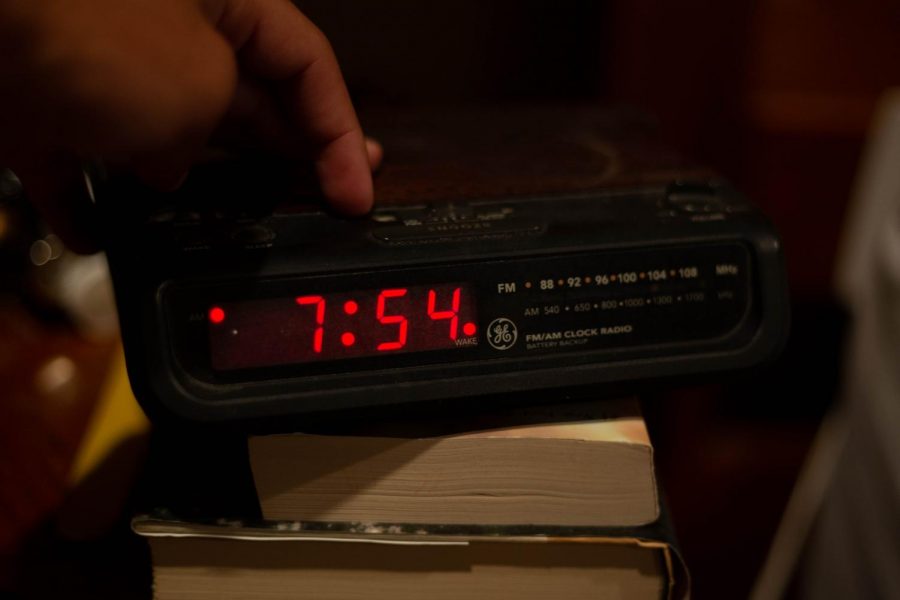

Marco Rubio, who cosponsored the Protecting Sunshine Act, suggested that schools should start later in response to concerns that students would be going to school in the dark. Teenagers have a naturally later sleep cycle than children and adults, which means they should wake up later in the day to stay in sync with their body clocks. Sleep deprivation is already endemic among adolescents due to teenagers having to wake up “early” to go to school.

But after complaints from parents about schools starting in the dark, and a spate of well-publicized road accidents involving children, the U.S. tried a permanent switch to daylight saving time in 1974 to save energy during the oil embargo by the Organization of Arab Petroleum Exporting Countries. has actually tried to make daylight saving time permanent once before. Studies have found that people working night shifts-forced to work at times that are out of sync with their natural sleep schedule-have higher rates of heart disease and cancer than than those who work daytime hours. Scientists are also concerned that forcing people to wake up earlier and fall asleep later than their natural body clocks dictate may worsen sleep deprivation, which is linked to increased rates of obesity, diabetes, dementia, and other health issues. Many sleep scientists support standard time over daylight saving, as the latter more closely aligns with the natural day-and thus our natural body clocks.Īdopting daylight saving time as standard “leaves us permanently out of sync with the natural environment,” said Joseph Takahashi of the University of South Texas to the New York Times. The Senate chose to keep daylight saving, but that might prove to be the worse of the two choices, with potentially worse health outcomes. Senate had the choice of making either standard time or daylight saving time permanent. In their fight to “protect sunshine,” the U.S. A 2019 poll found that seven in 10 Americans would prefer leaving their clocks alone.

A 2017 report from JPMorgan Chase found that shoppers spent 3.5% less in stores in the month immediately following the “fall back” switch to standard time, as earlier sunsets encouraged people to go home rather than shop.īut perhaps most importantly, Americans generally hate changing the time on their clocks. Retailers also support a switch to permanent daylight saving time. Other studies found the rate of workplace injuries and even heart attacks tends to increase shortly after the U.S. One study found a small but significant increase in road accidents on the Monday after the switch to summer time, as the lost hour of sleep affected people’s driving ability. Some researchers blame the switch between standard and daylight saving time for a number of social ills, including lost productivity and increased health stress, as people’s bodies adjust to the time change.

Southernly Austin gets 14 hours of daylight in summer and 10 hours in winter. For example: northernly Detroit gets over 15 hours of sunlight in the summer and only nine hours in winter. Southern states see a smaller seasonal difference in daylight hours, which reduces the need to “save” daylight. We get to sleep in a little bit tomorrow I hate having to set the clocks back every fall, it's such an antiquated custom. Don't forget to set your clock back tonight. population has also trended south in recent decades, with population growth in states like Arizona, Texas, and Florida significantly outstripping their Northern counterparts. To adjust the time on one's clock (s) back by one hour to account for the end of daylight saving time. This year, daylight saving time will end at 2 a.m. In 1895, he recommended a two-hour time change because he wanted to have more daylight after work to go hunting for bugs in the summer. The current DST format was proposed in New Zealand by entomologist George Hudson. The idea wasn't seriously considered, however, until more than a century later when William Willetts, a British builder, fiercely advocated for it. Who created daylight saving time?īenjamin Franklin is often credited with first proposing daylight saving in his 1784 essay, "An Economical Project." Hawaii and Arizona (with the exception of the Navajo Nation) do not observe daylight saving time, and neither do the territories of American Samoa, Guam, the Northern Mariana Islands, Puerto Rico and the U.S. territories participate in daylight saving time. PSA: When daylight saving time ends, change your smoke alarm batteriesįeeling groggy?: Everything you need to know about sleep and daylight saving What states have gotten rid of daylight saving time?


 0 kommentar(er)
0 kommentar(er)
